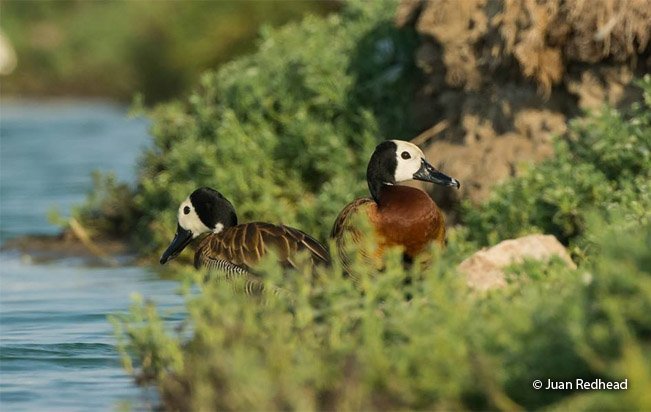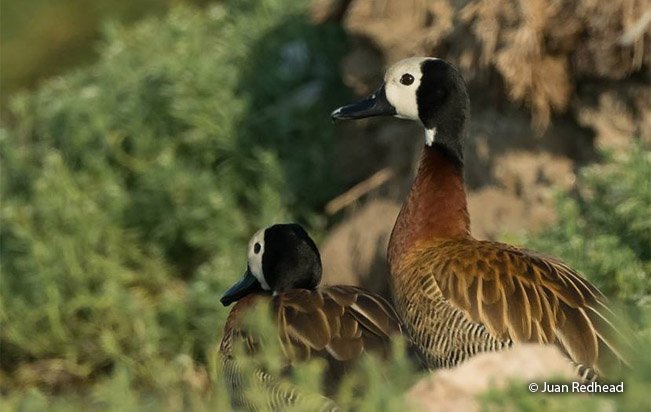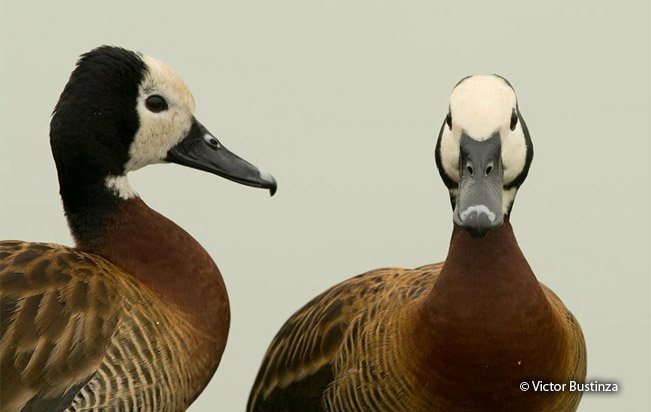
Three White-faced Whistling Ducks showed up in Villa Marshes in Lima-Peru. Villa Marshes is an Ebird hot spot and popular site among Peru’s fast growing birding community. The hype about these unusual birds grew fast to judge by the number of posts and photos on Facebook. However, the ducks’ behavior killed the festive mood for some and left others with a glimmer of hope.
A foto and associated mini report were posted on Facebook. Three White-faced Whistling Ducks are currently on the southwest pool of Villa Marshes! Needless to say, everyone wanted to see them. They are such good-looking ducks, and according to the literature, this sighting constitutes the second record in the region after about 100 years. More photos and re-assuring information on the ducks’ latest location kept coming in the following days. Even main-stream media thought this story was worth running an article on the reappearance of ducks “thought to be extinct in the region”.…a somewhat inaccurate statement.

Ducks at Villa Marshes. Photo: Courtesy of Juan Redhead
On the coming days after the first report, there was an obvious improvement in the quality of photos being uploaded on Facebook. From the distant initial photo showing the ducks to amazing close ups and even interesting behavior showing the ducks preening each other’s neck and faces in a rather tender fashion. Later, it was brought up that the now famous ducks appear not to mind the presence of humans. They don’t even take their tucked-in heads out, a position some resting ducks adopt, when people approach them to distances of only a few meters. These birds looked too comfortable in the close presence of photographers who did not mind getting pics showing the texture of the bird’s feathers.

Ducks at Villa Marshes. Photo: Courtesy of Victor Bustinza
So what to make of this? Is this the first record of this species in the region in over a 100 years?, or these are escaped birds.
White-faced Whistling Ducks are widespread in hot and humid habitats of eastern South America. Those who argue in favor of these ducks being wild suggest that the distance between their normal range and Villa Marshes is one these ducks would cover easily. Moreover, the confident nature of these ducks may be explained by the fact that White-faced Whistling Ducks are also found and even breed at city parks and ponds where they see people all the time; none of these birds has leg bands; they fly well; and look clean without signs of having been in captivity. Finally it would be unusual that three birds to escape at the same time and stick together.
Those who argue against these ducks being wild maintain that at least a pair of White-faced Whistling was kept along with a flock of ornamental waterfowl at a Lima city park; implying the White-face Whistling duck is a species bred in captivity. Their most compelling argument is that these birds are too tame even for wild birds used to people.
Both sides have strong points. It would be difficult to conclude one way or the other. In the meantime, and based on the birds behavior, the scale tips towards these birds being escapees until proven otherwise. It may take another 100 years before more White-faced Whistling duck show up in the region and they will be counted only if they look wild enough.
Featured Photo courtesy of Juan Redhead.





 New writers welcome – please contact us for details.
New writers welcome – please contact us for details.

















Leave a Comment